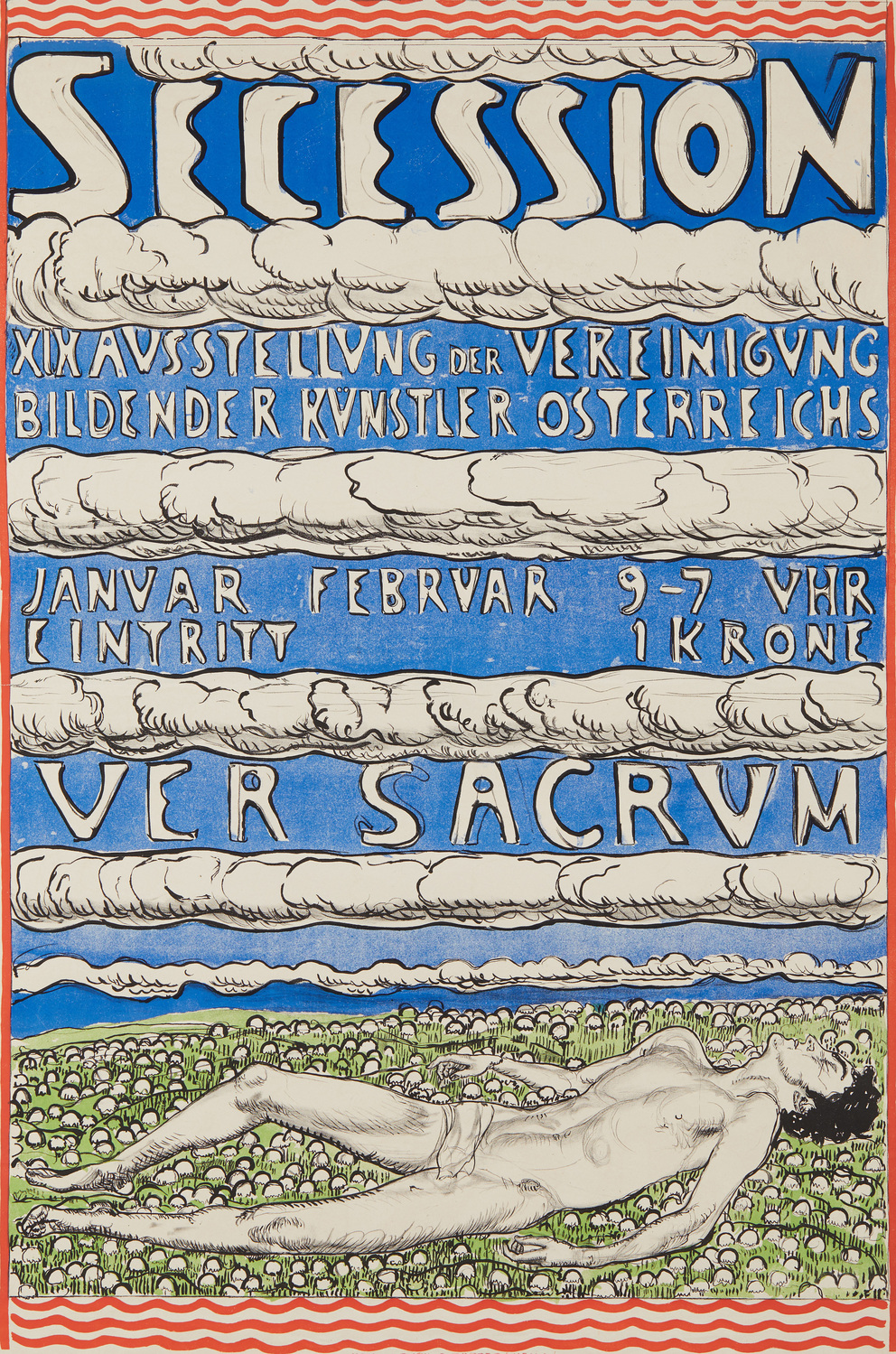The Swiss painter Ferdinand Hodler (1853–1918) designed the
Poster for the 19th Exhibition of the Vienna Secession in 1903 using a strictly horizontal structure rhythmized by linear bands of fluffy-looking clouds. On watercolor-like modulated blue ground, the lithograph provides the details on the Secession exhibition in white letters outlined with black contours which give the impression of a dynamic free drawing. In the lowest of the horizontal fields Hodler placed a reclining youth who is naked but for the hint of a loincloth and, forming a mandorla, is resting on a meadow strewn with seed-headed plants with his arms and legs slightly apart and his head tilted back – a metaphor for
Ver Sacrum, meaning holy spring, which was also the name of the Secession’s magazine. The composition shows the basic principles of Hodler’s artistic notion of parallelism. Hodler, who provided important impetus to many representatives of Austrian Modernism, became a member of the Vienna Secession in 1904.The Swiss painter Ferdinand Hodler (1853–1918) designed the
Poster for the 19th Exhibition of the Vienna Secession in 1903 using a strictly horizontal structure rhythmized by linear bands of fluffy-looking clouds. On watercolor-like modulated blue ground, the lithograph provides the details on the Secession exhibition in white letters outlined with black contours which give the impression of a dynamic free drawing. In the lowest of the horizontal fields Hodler placed a reclining youth who is naked but for the hint of a loincloth and, forming a mandorla, is resting on a meadow strewn with seed-headed plants with his arms and legs slightly apart and his head tilted back – a metaphor for
Ver Sacrum, meaning holy spring, which was also the name of the Secession’s magazine. The composition shows the basic principles of Hodler’s artistic notion of parallelism. Hodler, who provided important impetus to many representatives of Austrian Modernism, became a member of the Vienna Secession in 1904.
MH, 2021




